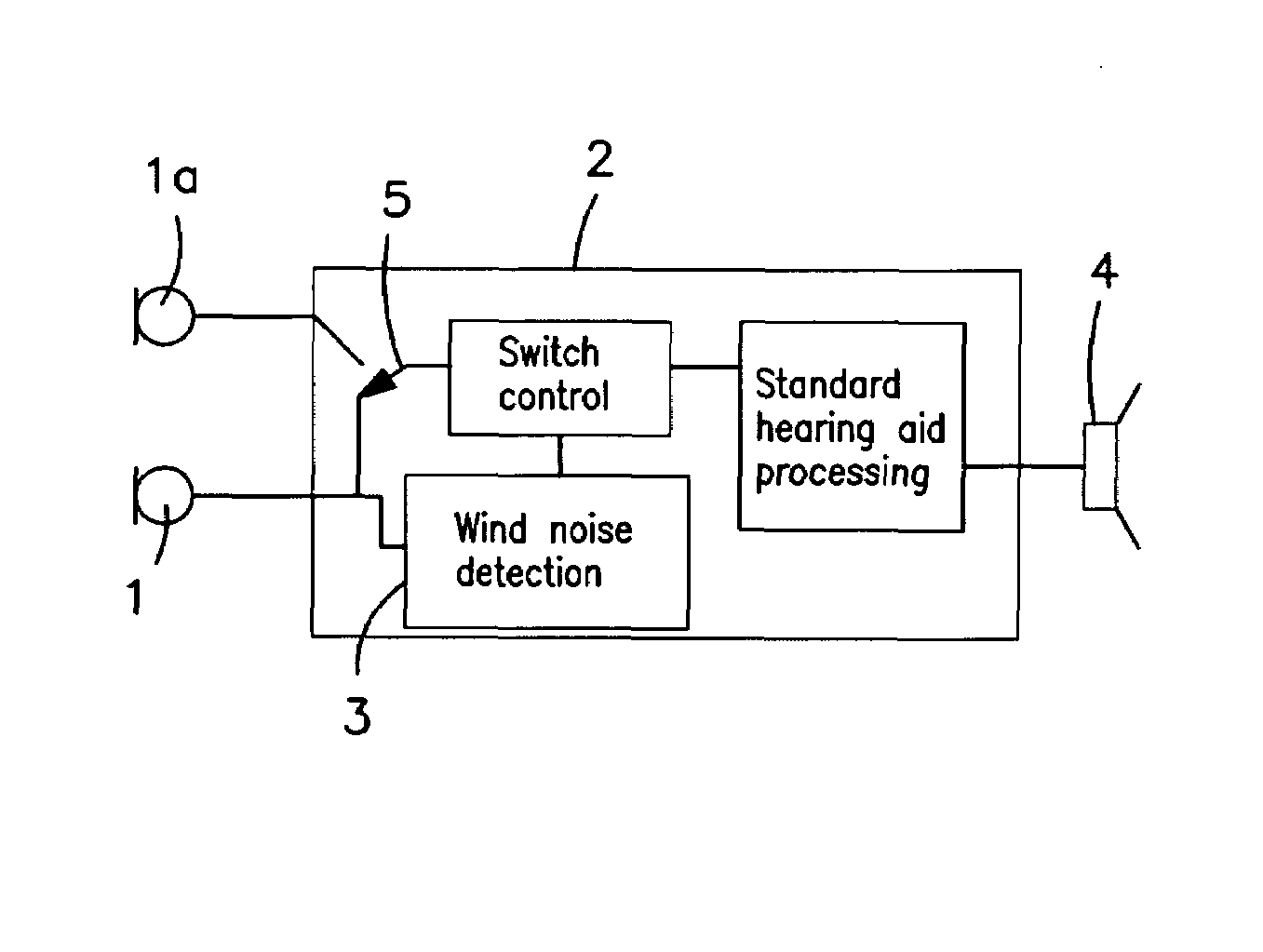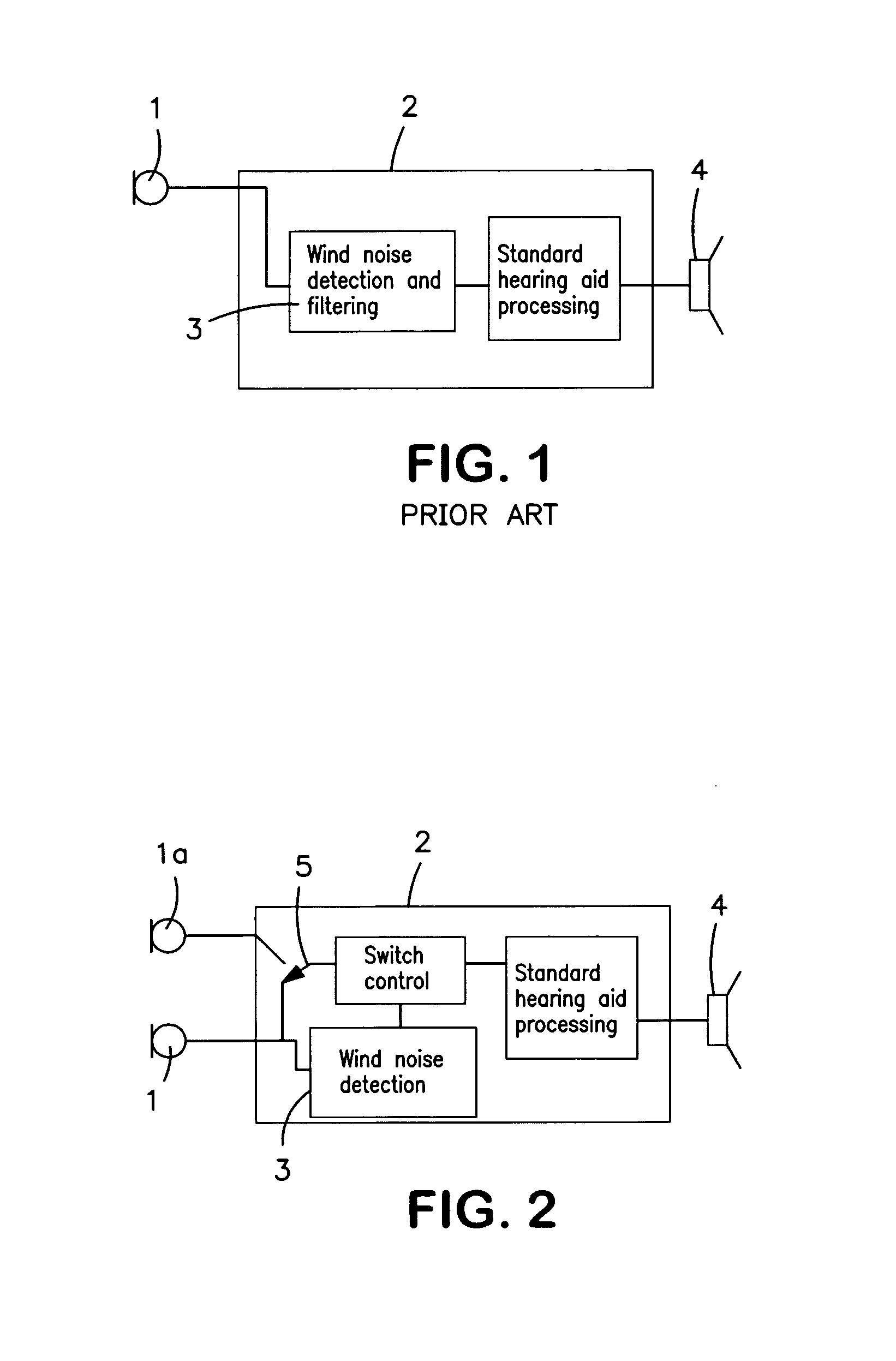Wind noise insensitive hearing aid
a hearing aid and wind noise technology, applied in the direction of transducer circuits, microphones, transducer casings/cabinets/supports, etc., can solve the problems of reducing the overall sensitivity, and achieve the reduction of the overall sensitivity, the effect of reducing the wind noise sensitivity and small pri
- Summary
- Abstract
- Description
- Claims
- Application Information
AI Technical Summary
Benefits of technology
Problems solved by technology
Method used
Image
Examples
Embodiment Construction
[0011]In the prior art hearing aid of FIG. 1 the microphone 1 receives the sound signal from the surrounding and converts it into an electrical signal. In some cases the microphone 1 is replaced by an array of microphones. The signal from the microphone / microphones undergoes signal processing in signal processor 2 whereby spectral and / or temporal content of the signal is used to identify noise or wind noise. Various schemes of signal processing may be used to overcome the noise. This could be high-pass filtering or shift to omni-mode in directional hearing aids. In FIG. 1 a wind noise detector 3 is shown, which receives the signal from the microphone 1. The Wind noise detector 3 may be incorporated in the signal processor 2. A signal processing scheme or filter, which corresponds the best with the detected level of wind noise is chosen, based on the output from the Wind noise detector 3. This prior art technique has the limitation that the wind noise often causes saturation problems...
PUM
 Login to View More
Login to View More Abstract
Description
Claims
Application Information
 Login to View More
Login to View More - R&D
- Intellectual Property
- Life Sciences
- Materials
- Tech Scout
- Unparalleled Data Quality
- Higher Quality Content
- 60% Fewer Hallucinations
Browse by: Latest US Patents, China's latest patents, Technical Efficacy Thesaurus, Application Domain, Technology Topic, Popular Technical Reports.
© 2025 PatSnap. All rights reserved.Legal|Privacy policy|Modern Slavery Act Transparency Statement|Sitemap|About US| Contact US: help@patsnap.com


